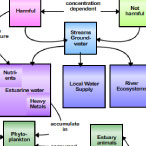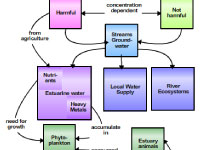|
|
Click Images to Enlarge
|
||||||||
Click Buttons for Presentation Videos & Maps |
About this Workshop:
For this workshop, 12 educators from the New England area were matched with ocean and climate scientists from the University of New Hampshire to improve their collective understanding of Earth's major ocean - climate systems. [more]
About this Scientist:
Linda Kalnejais is a chemical oceanographer who is interested in what happens to pollutants in the coastal ocean. She tests if pollutants - especially toxic metals - are permanently trapped in muds and sediments, or are re-released back into the water column. [more]













